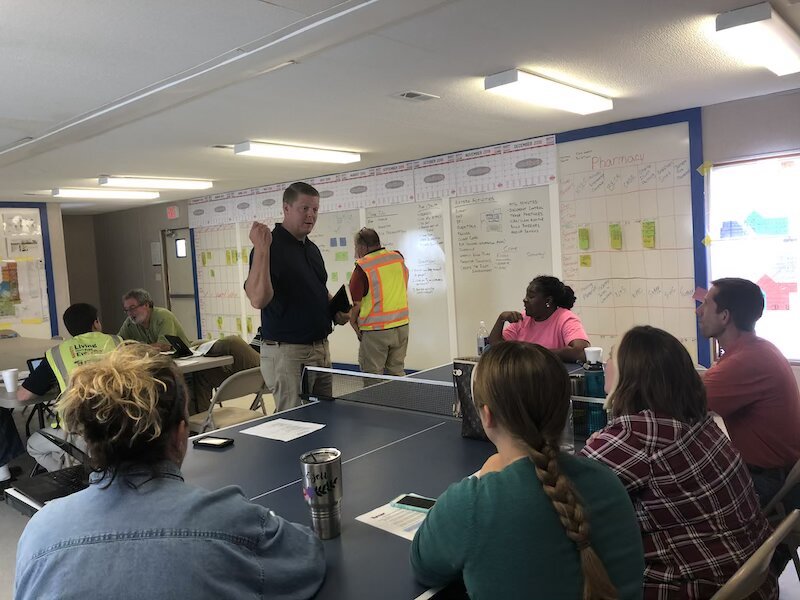Talk to contractors in just about any town in the country, and the topic of labor shortages inevitably comes up. Many contractors see the problem as being chronic with no end in sight, at least while the economy remains strong. But there are companies that are trying to do something about it, with an eye toward cultivating the next generation of plumbers, electricians, carpenters, and other construction laborers.
Earlier this month Lowe’s Cos., the giant home-improvement retailer, teamed with more than 60 partners to introduce Generation T, an effort to shift negative or indifferent perceptions about the trades among students and their parents by demonstrating mobility and career opportunities that skilled trades offer.
Lowe’s and SkillsUSA hosted the first-ever Generation T Bunk Build at Rose Bowl Stadium in Pasadena, Calif. This regional community service project provided 300 students enrolled in SkillsUSA’s carpentry program the chance to work with skilled carpenters to build 100 bunk beds for the nonprofit Sleep in Heavenly Place.
Last summer, Turner Construction’s Nashville office, in partnership with the Rutherford County (Tenn.) Chamber of Commerce, conducted a Teacher Externship Program, an immersive two-week course that gives local middle-school teachers exposure to the ins and outs of the construction industry, so they can share their experiences with their students.
This is the second year this program has been offered. The first year draw five teachers, and the second 20 participants, according to Paul Lawson, Project Executive of Turner Nashville.
Lawson—who chairs the Chamber’s Rutherford Works Construction Council and is a member of its Executive Workforce Council—says that the Teacher Externship Program is part of a larger effort by the Chamber and county to expand the market’s labor force.
The two-week program gave the teachers an inside look at how a construction company works. They spent time at Turner’s office with estimators and area managers. The teachers also went into the field at one of Turner’s local active job sites: a $48 million, 95,623-sf expansion of the St. Thomas Rutherford Hospital in Murfreesboro, Tenn., which is scheduled for completion next April. (Gresham Smith is the architect and engineer on this project.)
Lawson says the teachers “shadowed” project managers, two engineers, two supervisors, and the project’s safety manager.
Turner Nashville intends to offer this program next summer, and Lawson would like to expand the course beyond two weeks, “which is pretty quick” for giving teachers with no previous construction knowledge or hands-on understanding about what’s involved in building a building.
The program, he says, “has helped to open their eyes to what construction really is, and to dispel misconceptions about construction work,” says Lawson. “A teacher can have an impact on, what, 60 students a year.”
For teacher David Duez, the program was a revelation that he shared with his eighth-grade Career Explorations class through a series of lessons. “The kids are very interested in it,” he says. “They are young, but it doesn’t hurt to throw as much as we can at them, and if something sticks, great.”
Related Stories
| Oct 13, 2014
Debunking the 5 myths of health data and sustainable design
The path to more extensive use of health data in green building is blocked by certain myths that have to be debunked before such data can be successfully incorporated into the project delivery process.
| Oct 13, 2014
Department of Agriculture launches Tall Wood Building Competition
The competition invites U.S. developers, institutions, organizations, and design teams willing to undertake an alternative solution approach to designing and building taller wood structures to submit entries for a prize of $2 million.
| Oct 12, 2014
AIA 2030 commitment: Five years on, are we any closer to net-zero?
This year marks the fifth anniversary of the American Institute of Architects’ effort to have architecture firms voluntarily pledge net-zero energy design for all their buildings by 2030.
| Oct 10, 2014
A new memorial by Zaha Hadid in Cambodia departs from the expected
The project sees a departure from Hadid’s well-known use of concrete, fiberglass, and resin. Instead, the primary material will be timber, curved and symmetrical like the Angkor Wat and other Cambodian landmarks.
| Oct 9, 2014
Regulations, demand will accelerate revenue from zero energy buildings, according to study
A new study by Navigant Research projects that public- and private-sector efforts to lower the carbon footprint of new and renovated commercial and residential structures will boost the annual revenue generated by commercial and residential zero energy buildings over the next 20 years by 122.5%, to $1.4 trillion.
| Oct 9, 2014
More recession-postponed design projects are being resurrected, says AIA
About three quarters of the estimated 700 firms that serve as panelists on AIA’s Architectural Billings Index (ABI) had delayed or canceled major design projects in response to recessionary pressures. Nearly one-third of those firms now say they have since restarted stalled projects.
| Oct 9, 2014
Steven Holl's 'intersecting spheres' scheme for Taipei necropolis gets green light
The schematic design has been approved for the 50 000-sm Arrival Hall and Oceanic Pavilion for the Taiwan ChinPaoSan Necropolis.
| Oct 9, 2014
Beyond the bench: Meet the modern laboratory facility
Like office workers escaping from the perceived confines of cubicles, today’s scientists have been freed from the trappings of the typical lab bench, writes Perkins+Will's Bill Harris.
| Oct 8, 2014
New tools for community feedback and action
Too often, members of a community are put into a reactive position, asked for their input only when a major project is proposed. But examples of proactive civic engagement are beginning to emerge, write James Miner and Jessie Bauters.
| Oct 8, 2014
Massive ‘healthcare village’ in Nevada touted as world’s largest healthcare project
The $1.2 billion Union Village project is expected to create 12,000 permanent jobs when completed by 2024.

















